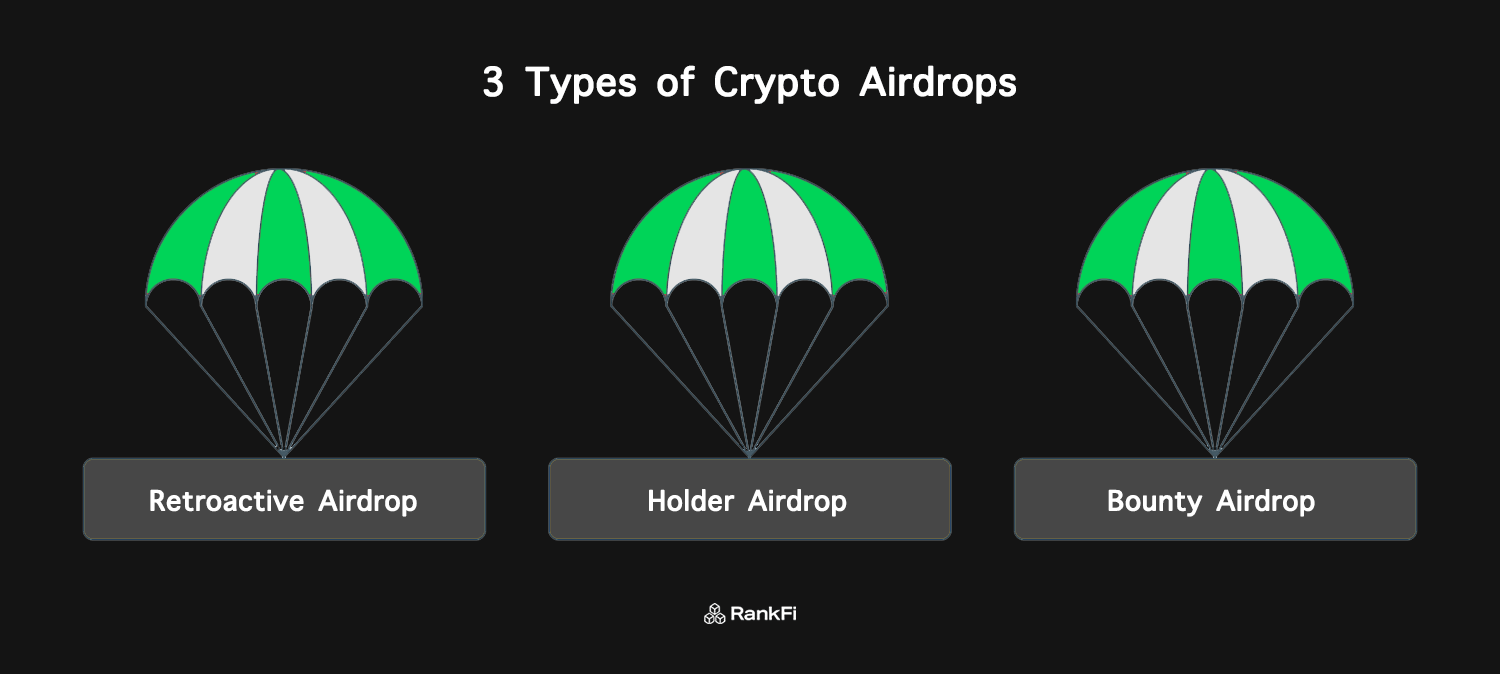Crypto airdrops are used by many projects, from start-ups to well-established businesses. Projects are only successful if they attract and maintain an active user base. An airdrop is basically a marketing strategy to raise awareness of a new currency. They are “free droppings” awarded to existing holders of a particular cryptocurrency. Here’s a quick rundown on what crypto airdrops are, and the many varieties of it that exist.
What is a crypto airdrop?
An airdrop in the context of cryptocurrency refers to the process where a blockchain project distributes free tokens or coins directly to the digital wallets of its community members. This is often done as a promotional strategy or as part of a token distribution plan. The underlying blockchain technology ensures the secure and transparent transfer of these assets to recipients.
“Crypto airdrops have a few advantages, such as brand exposure; you get the word out, reaching a large number of people.” You also get White Distribution because ICOs have a very limited number of investors. So, airdrops enable more people to own your cryptocurrency.”
Morten Christensen, Founder & CEO of AidropAlert: Youtube
Additionally, a lockdrop is a method used to distribute tokens across a broad network. It’s akin to Initial Coin Offerings (ICOs) or airdrops, but it distinguishes itself by not requiring the raising of funds. This shouldn’t be confused with a crypto airdrop.
When and why does a crypto airdrop occur?
- To generate excitement and create awareness
- Reward loyal and early supporters in your network
- As an alternative to Initial Coin Offerings (ICOs) which are banned in certain countries
The main reasons for crypto airdrops:
- A company might hold crypto airdrops if they’re new to space. For example, if there’s a project claiming to improve upon Bitcoin Cash, they might airdrop their token to all Bitcoin Cash holders.
- The other most common example is during a hard fork. Sticking with our Bitcoin Cash example, the network experienced a hard fork in November, 2020.
- The two new blockchains are Bitcoin Cash Node and Bitcoin Cash ABC, with the former being considered the traditional asset.
- When this happened, Bitcoin Cash ABC got airdropped into wallets holding Bitcoin Cash Node, ensuring users can utilize the ABC network without issue.
While these are the most popular airdrop methods, here is a simple breakdown of every single one:
Different types of crypto airdrops

1. Standard Airdrop
With standard crypto airdrops, one needs to sign up for ahead of time. Generally, the project will announce its airdrop and ask users to sign up using various methods. Once the date of the airdrop occurs, the assets will be sent to those who qualify.
2. Surprise Airdrop
Surprise crypto airdrops are just that – surprises! Basically, one day a user will wake up to find a new token in their wallet, assuming they hold the previous one required.
The idea is to create awareness to a new asset, hoping free assets will entice the user to use the network.
3. Exchange Airdrop
Similar to the previous two airdrops, an exchange airdrop differs in that it’s trying to generate trading volume. The 1inch exchange recently held an airdrop, providing its tokens to recent traders on the Uniswap platform.
Their goal? Bring traders over from a competitor’s exchange. If the first trade is essentially free thanks to the airdrop, it’s probably going to bring some users over. At least for a little while.
4. Smart Airdrop
Smart Airdrops are essentially targeted airdrops. They analyze the type of user that would be most interested in the project, looking at things like demographics and user interests before distributing the tokens in a more directed manner. BitTorrent airdrop for Tron holders is an ongoing airdrop that has designated about 90 billion BTT tokens to TRX holders for the next six years.
Drawbacks to crypto airdrops
While crypto airdrops sound like a win-win for both parties, there are some drawbacks to such a method. Some are as follows:
- Some airdrops could be scams trying to collect your data, and it’s easy to get carried away in a clicking frenzy with the promise of free coins.
- The U.S. has raised questions about whether they are liable for tax. Regulations could make it difficult for projects in America to offer tokens via airdrops.
- Some airdrops are pump and dump schemes, where only the original token holders will profit.

Avoid scams with crypto airdrops
The cryptocurrency space is consistently coming up with new ways to scam you out of your hard-earned cash. We’ve put together a list of things to watch out for.
StormGain is the perfect place to store your crypto airdrops safely.
Buy, Sell and Store your cryptos on StormGain Now!,
< Previous In Series | Crypto Security | Next In Series >

